DIY Ideas for Eco-Friendly Garden Decorations
Are you tired of the same old garden decorations that lack personality and charm? Well, it's time to shake things up! Exploring creative and sustainable ways to enhance your garden can be an exciting adventure. Imagine transforming your outdoor space into a vibrant, eco-friendly haven that not only looks good but also feels good. By using recycled materials, natural elements, and innovative designs, you can create a beautiful and environmentally conscious garden that reflects your unique style. In this article, we will dive into various DIY ideas that will inspire you to roll up your sleeves and get crafty. So, grab your tools and let’s get started!
Have you ever looked at an old pot or a broken chair and thought, "This could be something amazing in my garden!"? Repurposing household items is a fantastic way to breathe new life into things you might otherwise toss away. For instance, old pots can be painted and transformed into charming planters, while worn-out furniture can serve as unique garden seating. Imagine a vintage suitcase turned into a flower bed or an old ladder leaning against a tree, adorned with potted plants. The possibilities are endless! Not only does this approach save money, but it also reduces waste and adds a personal touch to your garden.
Connecting with nature is essential for creating a harmonious outdoor space. Using natural materials like wood, stones, and leaves can add a stunning aesthetic to your garden. Picture a rustic wooden sign that points to different sections of your garden or a stone pathway that guides visitors through your green oasis. You can source these materials from your surroundings—fallen branches, smooth river stones, or even leaves that can be pressed and framed. Incorporating these elements not only enhances the beauty of your garden but also creates a soothing atmosphere that invites relaxation and reflection.
Why buy new furniture when you can give new life to old pieces? Upcycling is the art of transforming discarded items into functional and stylish furniture. Think about using pallets to create a cozy seating area or turning an old dresser into a vertical planter. The beauty of upcycled furniture lies in its uniqueness; no two pieces will ever be the same! Plus, it’s a sustainable choice that contributes to reducing landfill waste. When designing your upcycled furniture, consider the style of your garden and how each piece will fit into the overall aesthetic. With a little creativity, you can craft furniture that not only looks great but is also eco-friendly.
Space is often a constraint for many gardeners, but that doesn’t mean you can’t enjoy a lush, green environment. Enter the vertical garden! This innovative gardening method allows you to maximize your space by growing plants upwards instead of outwards. You can create a vertical garden using recycled pallets, hanging containers, or even old shoe organizers. Imagine a wall of cascading greenery that not only beautifies your space but also purifies the air. Vertical gardens are perfect for small yards or balconies, and they can be tailored to fit your personal style, whether you prefer vibrant flowers, aromatic herbs, or leafy greens.
As the sun sets, your garden can take on a magical ambiance with the right lighting. Instead of standard electric lights, why not explore eco-friendly options? DIY solar lights made from recycled materials can illuminate your garden sustainably. For example, you can use mason jars filled with fairy lights or create lanterns from old glass bottles. Not only do these options save energy, but they also add a charming, whimsical touch to your outdoor space. Imagine hosting a gathering with friends, surrounded by twinkling lights that make your garden feel like a fairy tale!
Creating a vibrant ecosystem in your garden is not just beneficial for you; it also supports local wildlife. By incorporating wildlife-friendly decorations, you can encourage biodiversity and make your garden a haven for birds, bees, and butterflies. DIY projects like birdhouses, bee hotels, and butterfly gardens are simple yet effective ways to attract these wonderful creatures. Consider using natural materials and recycled items to create habitats that blend seamlessly into your garden. It’s a win-win situation: you get a lively garden, and wildlife gets a safe place to thrive!
One of the joys of gardening is celebrating the changing seasons. Why not create DIY decorations that reflect nature's beauty throughout the year? You can use natural and recycled materials to craft seasonal decor that keeps your garden looking fresh and inviting. For spring, think about flower crowns made from wildflowers, while autumn could inspire you to create wreaths from colorful leaves. Each season brings its own charm and inspiration, allowing you to express your creativity and keep your garden vibrant and alive all year round.
When it comes to decorating your garden, choosing eco-friendly paints and finishes is crucial. Opt for non-toxic options that won’t harm the environment or the creatures that inhabit your garden. There are plenty of brands now offering sustainable paints made from natural ingredients. Whether you’re painting furniture or creating garden signs, using eco-friendly finishes ensures that your DIY projects contribute positively to your outdoor space. Plus, it’s a great way to express your personal style while being kind to the planet.
Q: What are some easy DIY projects for beginners?
A: Starting with simple projects like painted pots, birdhouses, or vertical gardens can be a great way to ease into DIY gardening decor.
Q: Can I use any household items for repurposing?
A: Absolutely! Items like old furniture, pots, and even kitchen utensils can be creatively transformed into garden decorations.
Q: How do I ensure my vertical garden gets enough sunlight?
A: Position your vertical garden in a spot that receives adequate sunlight, and choose plants that thrive in your specific light conditions.
Q: Are DIY solar lights effective?
A: Yes! DIY solar lights can be very effective, especially when placed in areas that receive direct sunlight during the day.
Q: How can I attract wildlife to my garden?
A: Incorporating native plants, providing food sources, and creating habitats like birdhouses and bee hotels can help attract wildlife.
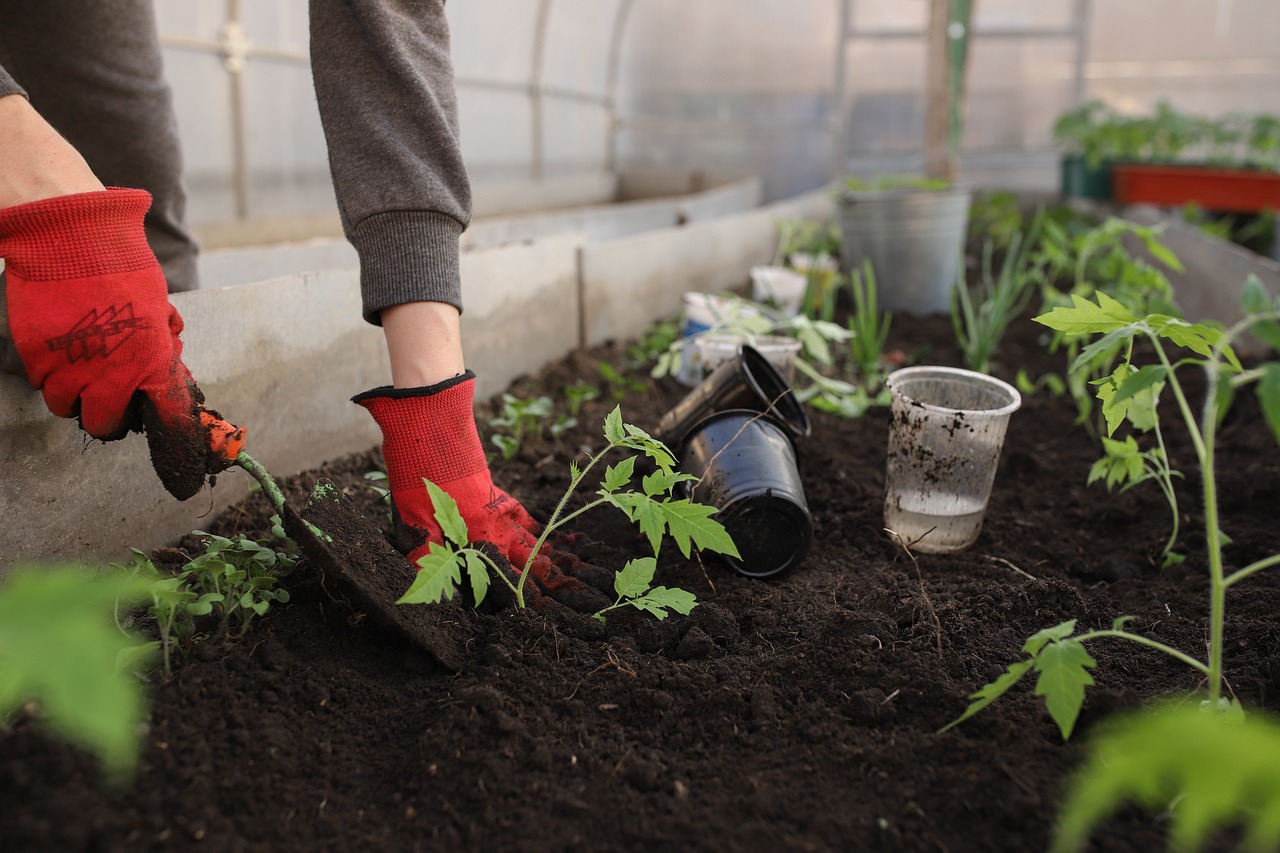
Repurposing Household Items
Have you ever looked around your home and thought, "This old item could use a new life"? Repurposing household items is not only a fun and creative way to enhance your garden, but it also promotes sustainability by reducing waste. Imagine transforming an old, cracked teapot into a charming flower planter or using mismatched plates as whimsical garden art. The possibilities are endless!
Start by rummaging through your garage, attic, or even your kitchen. Old pots and pans can easily be converted into unique planters. Just drill a few holes in the bottom for drainage, fill them with soil, and plant your favorite flowers or herbs. You can even paint them with eco-friendly paint to add a splash of color to your garden. Not only do they serve as functional planters, but they also add a quirky touch to your outdoor space.
Another fantastic idea is to use glass bottles. Instead of tossing them in the recycling bin, why not turn them into beautiful garden stakes? Simply cut the bottles to your desired height, and insert them into the ground next to your plants. You can even fill them with colored water or sand for an artistic flair. This not only adds a decorative element but also helps to mark your plants, making your garden visually appealing and organized.
Furniture can also find a second life in your garden. An old wooden chair can be transformed into a lovely plant stand. Just remove the seat and stack pots on the remaining structure. You can paint it in bright colors or leave it rustic for a more natural look. This not only saves furniture from being discarded but also adds a unique focal point to your garden.
If you have old tires lying around, don't throw them away! They can be painted and stacked to create a fun, colorful flower bed. You can even cut them in half to make a raised garden bed. This is a great way to use materials that would otherwise end up in a landfill, all while adding a bit of character to your garden.
Incorporating these repurposed items into your garden not only showcases your creativity but also tells a story. Each piece has its own history and adds a personal touch to your outdoor space. Plus, it can be a delightful project to involve your family in, making memories while creating something beautiful. So, gather those household items, roll up your sleeves, and let your imagination run wild!
- What types of household items can I repurpose for my garden?
Almost anything can be repurposed! Look for old pots, furniture, glass bottles, and even tires. The key is to think creatively and see the potential in each item. - Do I need special tools to repurpose items?
Basic tools like a drill, scissors, and paint brushes are usually sufficient. Depending on the project, you might need more specific tools, but many repurposing projects can be done with what you already have at home. - How can I ensure my repurposed items are safe for plants?
Make sure to clean any items thoroughly and remove any harmful substances. Use non-toxic paints and finishes if you plan to paint them, and ensure that any items used as planters have proper drainage.

Natural Materials for Garden Art
Using natural materials in your garden art not only enhances the beauty of your outdoor space but also helps you connect with the environment. Imagine walking through your garden and being greeted by sculptures made from wood, stones, and leaves, each telling a unique story. These materials are not only sustainable but also bring a touch of nature's elegance into your home. So, how can you incorporate these elements into your garden decor?
First, consider using wood. Old tree branches, driftwood, or even logs can be transformed into stunning garden sculptures or rustic furniture. For example, you can create a charming bird feeder or a whimsical trellis by simply cutting and shaping the wood into your desired form. The beauty of wood lies in its natural textures and colors, which can complement any garden style.
Next, let’s talk about stones. They are versatile and can serve multiple purposes in your garden. You can create a beautiful stone pathway, or stack stones to form an artistic sculpture. Think of it as building your own mini Stonehenge! You can even paint or decorate stones to add a splash of color and personality. Place them strategically around your garden to create focal points that draw the eye.
Another fantastic natural material is leaves. You can use leaves to make leaf prints on clay or create beautiful wreaths that celebrate the changing seasons. Imagine a wreath made from vibrant autumn leaves hanging on your garden gate, welcoming guests with a warm, natural touch. You can also dry leaves and use them in various crafts, such as making bookmarks or decorative wall hangings.
When sourcing these materials, think about what’s available in your area. Local parks, beaches, and even your backyard can provide a treasure trove of natural resources. Just remember to gather responsibly and avoid disturbing wildlife or damaging the environment. After all, the goal is to create art that enhances nature, not detracts from it.
Incorporating natural materials into your garden art creates a harmonious balance between your outdoor space and the environment. It allows for creativity and personalization, turning your garden into a reflection of your style and values. So grab those old branches, stones, and leaves, and let your imagination run wild. Your garden will thank you for it!
| Question | Answer |
|---|---|
| What types of wood can I use for garden art? | You can use any untreated wood, such as cedar, pine, or driftwood. Just ensure it’s free of chemicals and pesticides. |
| How do I preserve natural materials for outdoor use? | Consider applying a natural wood sealer or using non-toxic paints to protect your art from the elements. |
| Can I use synthetic materials in my garden art? | While natural materials are preferred for eco-friendliness, you can incorporate recycled synthetic materials as long as they are durable and won’t harm the environment. |
| Where can I find inspiration for natural garden art? | Check out local art galleries, nature walks, or even online platforms like Pinterest for creative ideas! |
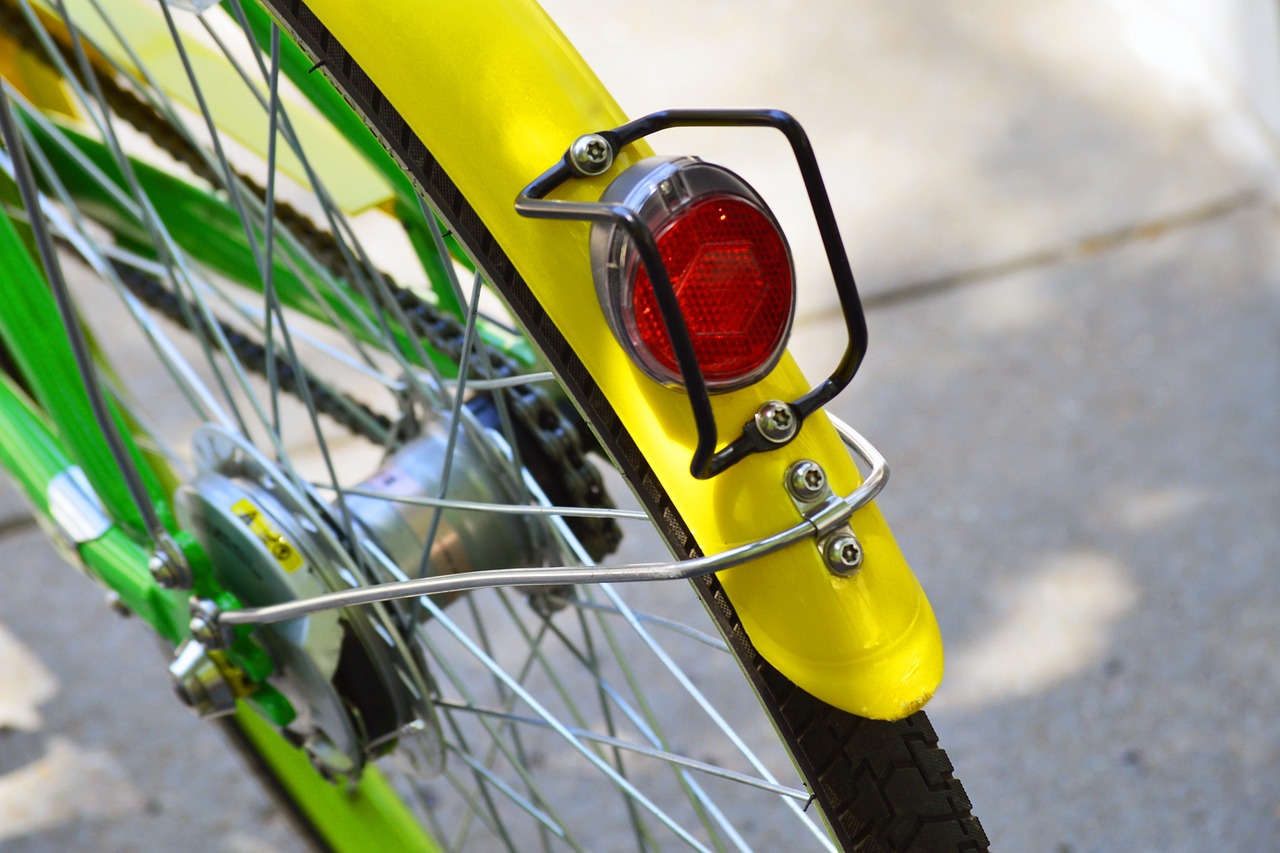
Upcycled Garden Furniture
Creating is not only a fantastic way to express your creativity, but it also significantly contributes to reducing waste. Imagine transforming an old wooden pallet into a charming bench or repurposing a vintage chair into a delightful plant stand. The beauty of upcycling lies in its ability to breathe new life into items that would otherwise be discarded, turning them into functional pieces that enhance your outdoor space.
Before diving into your DIY project, it’s essential to consider the types of materials you have on hand. Common items that make excellent upcycled furniture include:
- Wooden pallets: These can be used for benches, tables, or even vertical gardens.
- Old chairs: With a bit of sanding and painting, they can serve as unique plant holders or seating.
- Wine crates: Perfect for creating rustic side tables or storage solutions.
When selecting materials, think about their durability and how they will withstand the elements. For instance, if you're using wood, consider treating it with a non-toxic sealant to protect it from moisture and pests. This simple step can prolong the life of your furniture and keep it looking great for years to come.
Once you've gathered your materials, the next step is to design your furniture. You don’t need to be a master craftsman to create something beautiful. Start with simple designs that require minimal tools. For example, a basic bench can be made by stacking and securing several pallets together, while an old chair can be transformed into a planter by removing the seat and adding a planter box in its place.
Additionally, don’t shy away from adding a splash of color! Using eco-friendly paints or stains can not only protect your furniture but also add a vibrant touch to your garden. Imagine a bright blue bench surrounded by lush greenery or a rustic table adorned with colorful flower pots. These visual elements can create a stunning focal point in your outdoor space.
To help you get started, here’s a simple table of ideas for upcycling different furniture pieces:
| Item | Upcycled Idea | Materials Needed |
|---|---|---|
| Wooden Pallet | Garden Bench | Pallets, screws, sandpaper, paint |
| Old Chair | Plant Stand | Chair, planter box, paint |
| Wine Crates | Side Table | Crates, screws, sandpaper |
Don’t forget to involve your family or friends in your upcycling projects! It can be a fun way to bond, share ideas, and even host a little garden party once your creations are complete. Plus, the satisfaction of seeing your old items transformed into something beautiful and useful is truly rewarding.
In conclusion, upcycled garden furniture is an excellent way to combine sustainability with personal creativity. By taking the time to repurpose old items, not only do you contribute to a healthier planet, but you also create a unique outdoor space that reflects your style. So gather your materials, unleash your imagination, and let the upcycling adventure begin!
Q: What type of materials are best for upcycling garden furniture?
A: Look for durable materials such as wood, metal, and sturdy plastics. Items like pallets, old furniture, and crates work wonderfully.
Q: How do I protect my upcycled furniture from the weather?
A: Use eco-friendly sealants or paints to protect your furniture from moisture and UV rays. Regular maintenance will also help prolong its life.
Q: Can I upcycle furniture if I have no DIY experience?
A: Absolutely! Start with simple projects and gradually work your way up. There are plenty of tutorials online to guide you through the process.
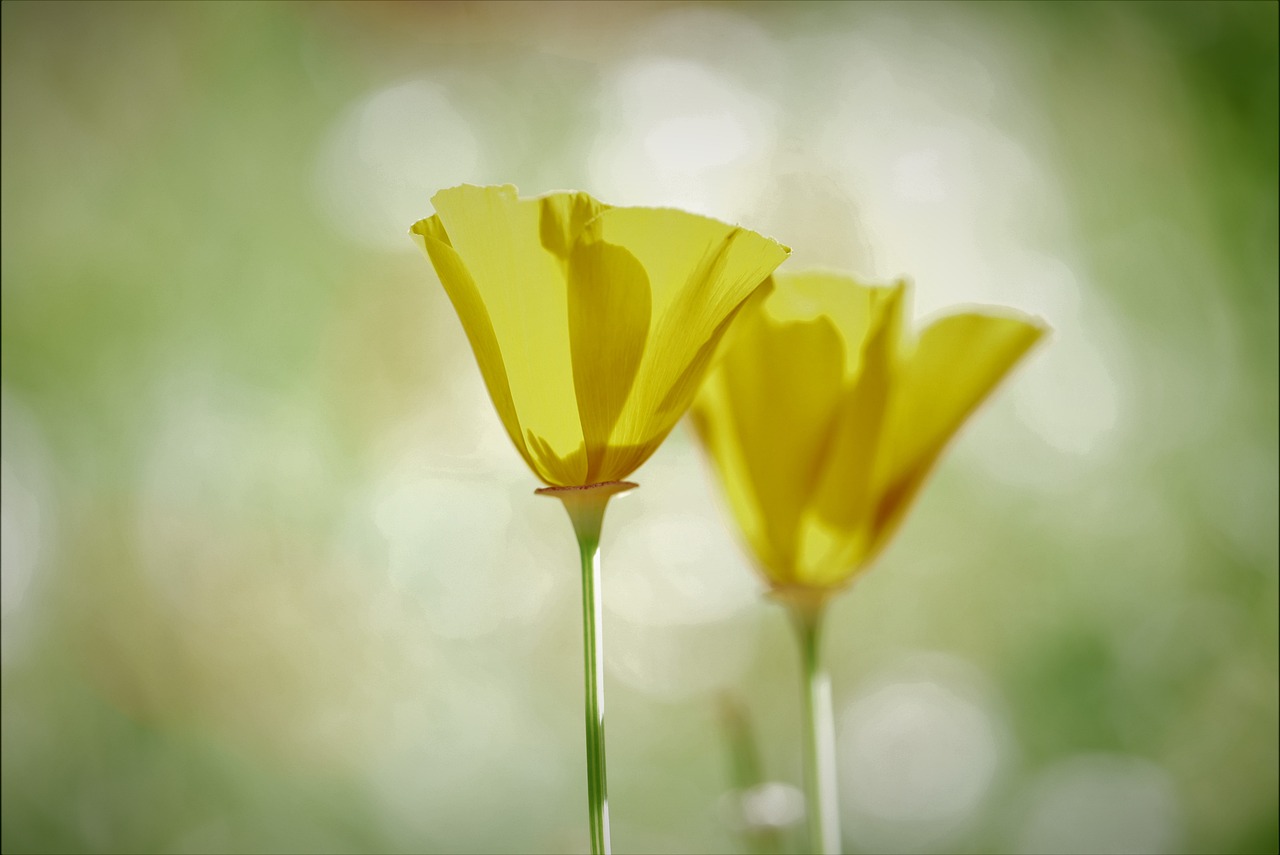
Creating a Vertical Garden
Have you ever looked at your small backyard or balcony and thought, "I wish I could fit more plants in here?" Well, vertical gardens are the perfect solution! Not only do they maximize your space, but they also add a stunning visual element to your outdoor area. Imagine lush greenery climbing up the walls or cascading down from hanging planters. It's like bringing a piece of nature right into your living space!
Creating a vertical garden can be as simple or as complex as you want it to be. The beauty of DIY projects is that you can tailor them to your style and needs. First things first, you’ll want to gather some materials. Recycled pallets, old wooden crates, and even hanging shoe organizers can all be transformed into beautiful vertical gardens. Just think about what you have lying around that could use a new life!
When it comes to selecting plants, consider going for a mix of herbs, flowers, and even succulents. Herbs like basil, mint, and rosemary not only look beautiful but are also functional. Imagine snipping fresh herbs right from your vertical garden for your next culinary masterpiece! Flowers can add a pop of color, while succulents require minimal maintenance, making them an excellent choice for those who might forget to water occasionally.
Here’s a simple method to create your vertical garden using a recycled pallet:
- Step 1: Find a sturdy pallet. Make sure it’s clean and free of any chemicals.
- Step 2: Lay it flat and fill the slats with a good quality potting soil.
- Step 3: Choose your plants and arrange them in the soil, ensuring that taller plants are placed at the top and trailing plants at the bottom.
- Step 4: Once your plants are in place, secure the pallet upright against a wall or fence.
- Step 5: Water your plants and watch them thrive!
Vertical gardens are not just about aesthetics; they also provide numerous environmental benefits. They can help improve air quality, reduce noise pollution, and even provide insulation for your home. Plus, they create a habitat for various insects and birds, promoting biodiversity right in your backyard.
If you’re looking for something a little more unique, consider using hanging containers. You can repurpose old tin cans or glass jars. Simply attach them to a wooden frame or a sturdy wall using brackets. Fill them with soil and your favorite plants, and voilà! You have a charming vertical garden that stands out.
In essence, creating a vertical garden is not only a fun DIY project but also a fantastic way to enhance your outdoor space sustainably. Whether you have a green thumb or are just starting out, the possibilities are endless. So, roll up your sleeves, get creative, and let your garden grow upwards!
Q: What types of plants are best for vertical gardens?
A: The best plants for vertical gardens include herbs, flowering plants, and succulents. Choose plants that thrive in your climate and consider their sunlight needs.
Q: How do I water my vertical garden?
A: You can water your vertical garden using a watering can or a hose with a spray attachment. Make sure to check the soil moisture regularly and adjust your watering schedule as needed.
Q: Can I create a vertical garden indoors?
A: Absolutely! Vertical gardens can be created indoors using wall-mounted planters or shelves. Just ensure that your indoor plants receive adequate light, either from natural sunlight or grow lights.

Eco-Friendly Lighting Solutions
When it comes to sprucing up your garden, lighting plays a pivotal role in creating the right ambiance. But why settle for ordinary when you can go eco-friendly? Imagine walking through your garden at night, softly illuminated by lights that not only enhance the beauty of your plants but also care for the planet. Eco-friendly lighting solutions are not just a trend; they are a way to connect with nature while reducing your carbon footprint.
One of the most popular eco-friendly lighting options is solar-powered lights. These little wonders harness the sun's energy during the day and glow softly at night. You can find them in various styles, from charming fairy lights to elegant lanterns. The best part? They require no wiring or electricity, making installation a breeze. Just place them in a sunny spot, and let the sun do the work! Plus, they come in different designs, so you can choose ones that complement your garden's aesthetic.
If you’re feeling crafty, why not create your own solar lights? This DIY project can be as simple or as intricate as you want. For example, you can use old glass jars or bottles as light holders. Simply place a solar light inside the jar, and voilà! You have a beautiful, glowing centerpiece for your garden table or pathway. Not only does this add a personal touch, but it also repurposes materials that might otherwise end up in the trash.
Another innovative idea is to use recycled materials to create unique lanterns. Think about using tin cans! With a little bit of effort, you can punch holes in them to create beautiful patterns. When you place a candle or a small LED light inside, the light shines through the holes, casting mesmerizing shadows on the ground. It’s a fun project that can involve the whole family, and the end result is both artistic and functional.
For those who want to elevate their garden’s atmosphere, consider string lights. These are versatile and can be draped over trees, fences, or pergolas. Opt for energy-efficient LED string lights, which consume less power and last longer than traditional bulbs. Not only do they look stunning, but they also provide a warm, inviting glow that makes your garden feel like a magical retreat.
Don’t forget about the importance of lighting placement. Strategic positioning can highlight your garden's best features, such as a beautiful tree or a blooming flower bed. Consider using spotlights or uplights to draw attention to these focal points. Additionally, placing lights along pathways not only enhances safety but also creates a welcoming atmosphere for evening strolls.
Lastly, if you’re looking for a more rustic charm, why not try making candle holders from natural materials? You can use logs or stones to create a base for your candles. This not only adds a touch of nature to your decor but also gives your garden a cozy, inviting feel. Just ensure that you place them safely and never leave candles unattended.
In summary, eco-friendly lighting solutions can transform your garden into a stunning nighttime oasis while being kind to the environment. Whether you choose solar lights, recycled materials, or DIY projects, the options are endless. So, what are you waiting for? Let your garden shine bright and showcase your commitment to sustainability!
- What are the benefits of using solar lights in my garden?
Solar lights are energy-efficient, easy to install, and require no wiring. They help reduce electricity costs and are environmentally friendly. - Can I create my own eco-friendly lights?
Absolutely! You can repurpose items like glass jars or tin cans to make unique and stylish garden lights. - How do I ensure my garden lights are safe?
Always use outdoor-rated lights, avoid overloading circuits, and keep flammable materials away from open flames.
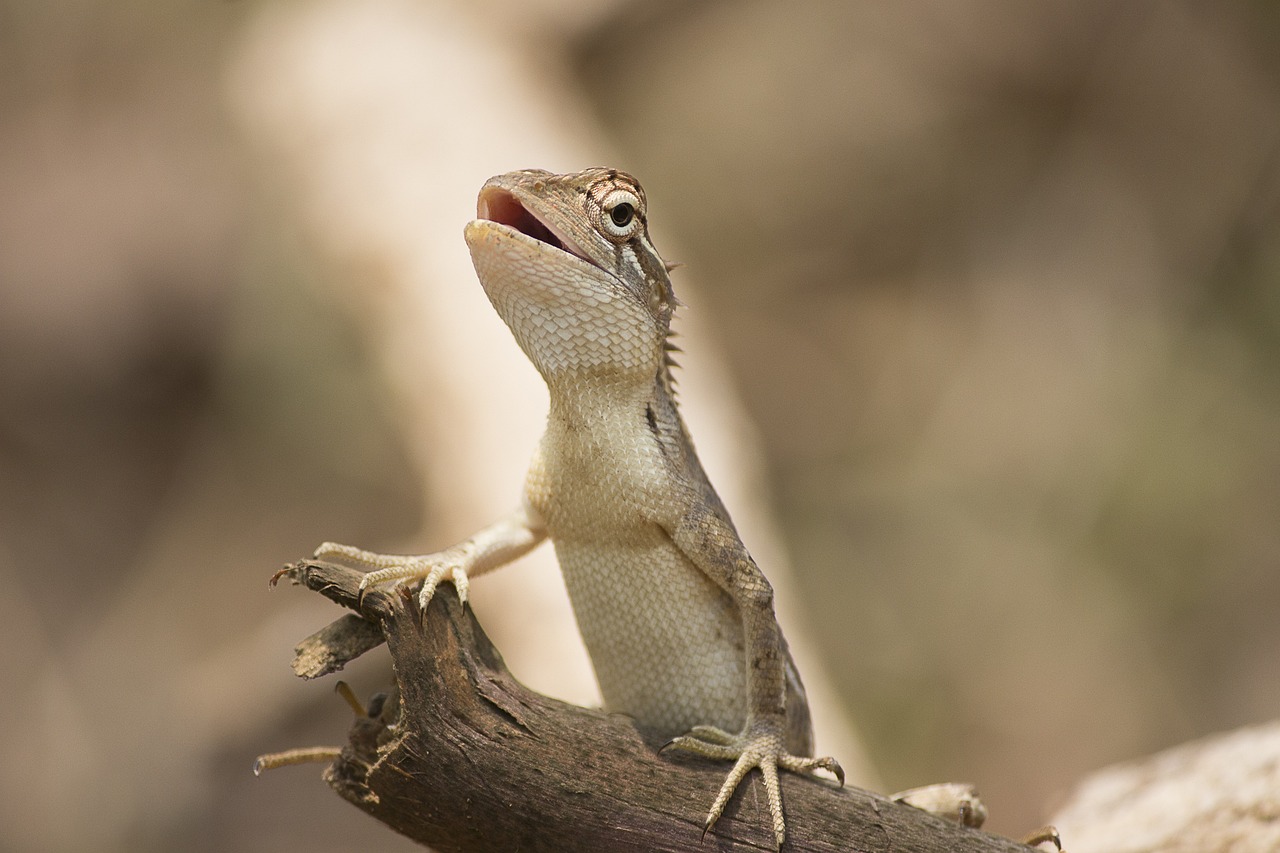
Wildlife-Friendly Decor
Creating a garden that welcomes wildlife is not just an environmentally friendly choice; it’s also a way to bring your outdoor space to life! Imagine the delightful sounds of birds chirping, the gentle flutter of butterflies, and the busy buzz of bees. serves a dual purpose: it enhances the beauty of your garden while providing essential habitats for local creatures. So, how can you transform your garden into a sanctuary for wildlife?
One of the simplest yet most effective ways to attract wildlife is by building birdhouses. These charming little structures invite various bird species to nest, providing them with a safe space to raise their young. You can easily create a birdhouse using reclaimed wood or even old wooden pallets. Just ensure that the entrance hole is appropriately sized for the birds you want to attract. For instance, a hole that’s about 1.5 inches in diameter is perfect for bluebirds, while a 1.25-inch hole works well for wrens. Additionally, consider adding a small perch below the entrance to make it easier for birds to enter and exit.
Another fantastic DIY project is constructing bee hotels. These are vital for supporting our pollinators, especially solitary bees that don’t live in hives. Building a bee hotel is straightforward: all you need are some hollow stems, bamboo tubes, or even drilled blocks of wood. Arrange these materials in a sheltered spot in your garden, ideally facing south to catch the morning sun. Not only will you be helping the bees, but you’ll also have a fascinating focal point in your garden!
Don't forget about creating a butterfly garden. Butterflies are attracted to vibrant colors and sweet scents, so planting a variety of nectar-rich flowers is essential. Consider using plants like milkweed, coneflower, and lavender. These flowers not only provide food for butterflies but also serve as host plants for caterpillars. To enhance your butterfly garden, you might add shallow dishes filled with water and pebbles for butterflies to drink from. This simple addition can help create a thriving ecosystem right in your backyard.
To further enrich your wildlife-friendly decor, consider adding a few elements that provide shelter. Piles of stones, logs, or brush can create hiding spots for small mammals and insects. These natural materials not only support biodiversity but also add a rustic charm to your garden. Think of them as nature’s own garden decorations, blending seamlessly into the landscape.
Lastly, it's essential to keep your garden chemical-free. Using pesticides can harm not just the pests but also beneficial insects and wildlife. Opt for organic gardening methods that promote a healthy ecosystem. By doing so, you’re not just decorating your garden; you’re creating a vibrant habitat that supports life.
In conclusion, incorporating wildlife-friendly decor into your garden is a rewarding endeavor that can lead to a flourishing outdoor space. By building birdhouses, bee hotels, and butterfly gardens, and providing natural shelters, you can invite nature into your home. So, roll up your sleeves, get creative, and watch as your garden transforms into a lively sanctuary!
- What materials do I need to build a birdhouse? You can use reclaimed wood, plywood, or even old crates. Make sure to avoid treated wood, as it can be harmful to birds.
- How can I attract more butterflies to my garden? Plant a diverse range of nectar-rich flowers and include host plants for caterpillars. Also, provide shallow water sources for them to drink.
- Is it safe to use pesticides in a wildlife-friendly garden? It's best to avoid pesticides altogether. Instead, opt for organic solutions to protect beneficial insects and wildlife.
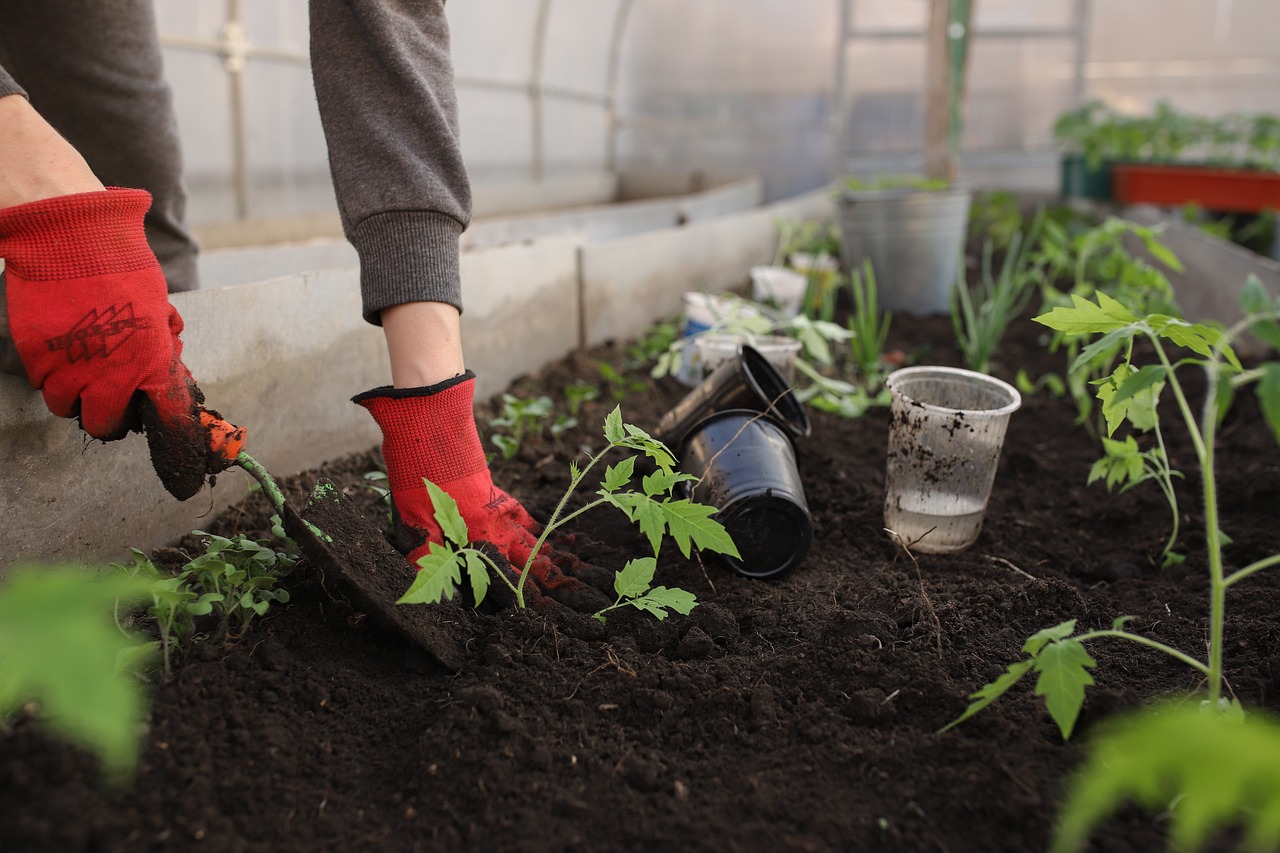
Seasonal Decorations
When it comes to making your garden shine throughout the year, are a fantastic way to embrace nature's rhythms and express your creativity. Think of your garden as a canvas that changes with the seasons, allowing you to paint a new picture every few months. Why not celebrate the beauty of each season with unique, DIY decorations that reflect the essence of spring blooms, summer sunshine, autumn leaves, and winter wonder? By using natural and recycled materials, you can create stunning pieces that not only enhance your outdoor space but also promote sustainability.
For spring, consider crafting colorful wind chimes from old utensils or glass bottles. These can dance in the breeze, creating a delightful symphony of sounds that welcomes the warmer weather. As summer approaches, you might want to create vibrant flower arrangements using repurposed containers like tin cans or wooden crates. Fill them with bright annuals or even herbs, adding both beauty and functionality to your garden. Autumn is the perfect time to gather fallen leaves, pinecones, and acorns to create a rustic centerpiece. You can use these natural elements to make wreaths or garlands that bring the warmth of fall into your outdoor space.
As winter rolls in, don’t let your garden fade into a dull landscape. Instead, embrace the season by crafting decorations that reflect the beauty of frost and snow. You can make snowflake ornaments from twigs or create a cozy atmosphere with DIY lanterns made from glass jars filled with battery-operated fairy lights. These charming touches will not only brighten your garden but also provide a warm welcome to any guests who visit.
To help you brainstorm some ideas, here’s a quick table summarizing seasonal decoration ideas:
| Season | Decoration Ideas |
|---|---|
| Spring | Colorful wind chimes, flower arrangements in repurposed containers |
| Summer | Hanging planters, painted rocks for garden paths |
| Autumn | Wreaths from leaves and pinecones, rustic centerpieces |
| Winter | Snowflake ornaments, lanterns with fairy lights |
By embracing the changing seasons, you not only keep your garden looking fresh and inviting but also engage with nature in a deeper way. Each decoration tells a story, reminding us of the beauty and transience of life. So grab your tools, unleash your creativity, and let your garden reflect the seasons in all their glory!
Q: What materials can I use for seasonal decorations?
A: You can use a variety of materials, including natural elements like leaves and twigs, as well as recycled items like glass jars and old furniture. The key is to get creative and think outside the box!
Q: How can I ensure my decorations are eco-friendly?
A: Focus on using non-toxic paints, natural finishes, and materials that can be recycled or composted. This way, you can enjoy your decorations without harming the environment.
Q: Can I change my decorations throughout the year?
A: Absolutely! Changing your decorations with the seasons not only keeps your garden looking fresh but also allows you to express your creativity and adapt to nature's changes.
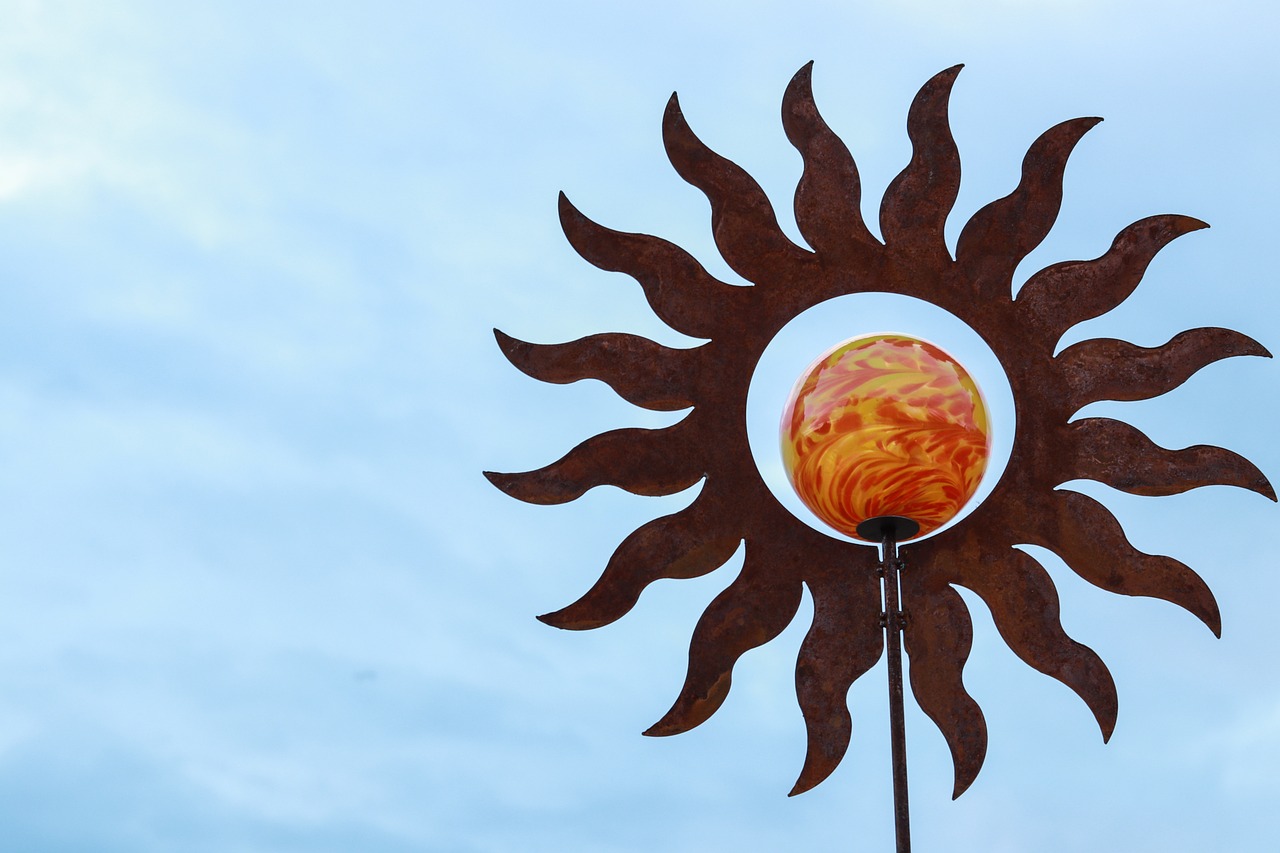
Eco-Friendly Paint and Finishes
When it comes to decorating your garden, choosing the right paint and finishes is crucial—not just for aesthetics but also for the environment. Eco-friendly paints are made from natural ingredients and contain fewer volatile organic compounds (VOCs), which can be harmful to both your health and the planet. By opting for these sustainable options, you not only enhance the beauty of your garden but also contribute to a healthier ecosystem.
So, what should you look for when selecting eco-friendly paints? First off, consider non-toxic options that are free from harmful chemicals. Many brands now offer paints that are biodegradable and made from renewable resources. For example, you can find paints derived from plant oils, natural pigments, and water-based formulations. These options are not only safer but also provide vibrant colors that can withstand the elements.
Another important aspect is the finish. A matte or satin finish can work beautifully in garden settings, as they tend to blend well with natural surroundings. If you're painting furniture or decorative items, make sure the finish is durable enough to withstand rain and sun exposure. Outdoor-rated paints are specifically designed for this purpose, ensuring your creations last longer without fading or peeling.
To give you a clearer idea of what’s available, here’s a quick comparison table of popular eco-friendly paint brands:
| Brand | Type | VOCs | Finish Options |
|---|---|---|---|
| Clare | Interior/Exterior | Zero VOC | Matte, Eggshell, Satin |
| Benjamin Moore Natura | Interior | Zero VOC | Flat, Eggshell, Satin |
| Behr Premium Plus | Interior/Exterior | Low VOC | Flat, Satin, Semi-Gloss |
| Rust-Oleum Chalked | Interior/Exterior | Low VOC | Matte |
When applying these eco-friendly paints and finishes, preparation is key. Start with a clean surface; remove any old paint, dirt, or mildew. If you’re working with wood, consider using a natural wood sealant to protect it from moisture before painting. This not only enhances the longevity of your project but also ensures that your eco-friendly choice remains effective over time.
Lastly, remember that the application method can also impact the environment. Using a brush or roller is generally more eco-friendly than spray painting, which can release overspray into the air. Always work in a well-ventilated area to minimize inhalation of any fumes, even if they are low in VOCs. By taking these steps, you can create a beautiful, sustainable garden that reflects your commitment to the planet.
- Are eco-friendly paints more expensive than traditional paints? While they can be slightly pricier, the long-term benefits for health and the environment often outweigh the initial costs.
- Can I use eco-friendly paint on outdoor furniture? Absolutely! Just ensure you choose a product specifically designed for outdoor use to withstand the elements.
- How do I clean brushes used for eco-friendly paints? Most eco-friendly paints are water-based, so you can clean your brushes with soap and water.
Frequently Asked Questions
- What are some easy DIY ideas for eco-friendly garden decorations?
There are plenty of simple DIY ideas to spruce up your garden! You can repurpose old household items like pots and bottles into unique planters or decorations. Using natural materials such as stones and wood can also create stunning art pieces that blend beautifully with your garden's environment.
- How can I use recycled materials in my garden?
Recycled materials can be a treasure trove for garden decor! Think about using old furniture for seating or transforming glass bottles into garden lights. Even pallets can be upcycled into vertical gardens or plant stands, maximizing your space while keeping things eco-friendly.
- What types of natural materials work best for garden art?
Natural materials like driftwood, stones, and leaves work wonderfully for garden art. You can create sculptures, pathways, or even decorative borders using these elements. They not only look great but also help your garden feel more connected to nature.
- Can I make my own garden furniture from upcycled materials?
Absolutely! Upcycling is a fantastic way to create stylish and functional garden furniture. Look for items like old wooden pallets, crates, or even discarded chairs that can be refurbished. With a little creativity, you can craft benches, tables, or even unique seating areas.
- What are some ideas for creating a vertical garden?
Vertical gardens can be made using various materials! Recycled pallets are a popular choice, as well as hanging containers or even old shoe organizers. These options allow you to maximize space while adding lush greenery to your outdoor area.
- How can I illuminate my garden sustainably?
For eco-friendly lighting, consider making solar lights from recycled materials! You can use jars or bottles to create lanterns that harness solar energy, providing a charming glow while being kind to the environment. It's a win-win!
- What wildlife-friendly decorations can I add to my garden?
Encouraging local wildlife is a fantastic way to enhance your garden's ecosystem! You can create birdhouses, bee hotels, or butterfly gardens using simple DIY techniques. These additions not only support biodiversity but also bring life and color to your outdoor space.
- How can I create seasonal decorations for my garden?
Seasonal decorations can be a fun way to keep your garden looking fresh! Use natural materials like leaves or pinecones to create autumn decor, or flowers and greenery for spring. You can also repurpose items to reflect the changing seasons, keeping your garden dynamic and engaging.
- What are eco-friendly options for paints and finishes?
When it comes to painting your garden decor, look for non-toxic, eco-friendly paints and finishes. These options are safer for the environment and your garden's inhabitants. Brands that offer natural or low-VOC (volatile organic compounds) paints are great choices!



















